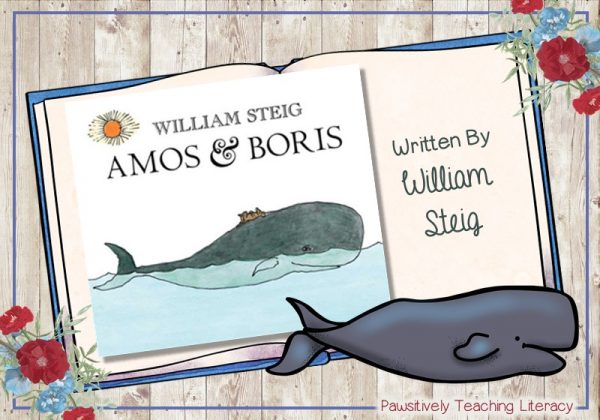

“Amos and Boris” by William Steig; a Whale of a Tale About an Unlikely Seagoing Friendship Between a Mammal of Size and a Mote of a Mouse! Celebrate International Friendship Today with a Classic Picture Book Read!
William Steig, a renowned and celebrated illustrator for “The New Yorker,” during his lifetime, and unlikely children’s book author, started out on that journey in his sixties, He is a true beacon of hope for the saying “IT’S NEVER TOO LATE” for a Chapter Two in your life.
He’s at the very tippity top of my all time favorite picture book author list, along with Tomie de Paola, Tomi Ungerer and others too many to list.
I believe William Steig never received his full due at the time as the author of the picture book, “Shrek,” from which the mega hit children’s movie of the same name was made.
And that, to me, is very sad!
I wonder how many children have read the picture book by William Steig from which it was taken? I’d venture to say, not many. But, hey, it’s not too late to pick it up with your young reader and see how the original book and the movie of the same name, match up.
William Steig had the ability to hold a reader’s attention, not only with his illustrations, but with characters and a narrative that held readers’ interest, entertained and made them CARE about the outcome.
His use of language was initially what drew me to him. It was never watered down for his young readers, where a villain was referred to as an “odoriferous wretch” in his magical tale of “The Amazing Bone.”
In “Amos and Boris”, as Amos, the tiny mouse sails in his boat called, The Rodent,” he sails forward on a “phosphorescent sea,” in a boat that was launched with his “savage strength.”
How he meets the mammal whale named Boris, who rescues Amos as he topples from his ship, and is saved from a watery grave, then returns the favor in kind, is a type of unique Aesop’s fable.
As Boris, the whale is beached and “breaded with sand,” ( I love the phrase), this tale about an unlikely friendship of a mouse and whale, built on trust and understanding, is a sure proof that strength in friendship is based on a commitment in good times and bad. And it allows the young reader to see that differences, instead of causing separation, can be a welder of wonderful closeness.
Steig won the Caldecott in 1970 for “Sylvester and the Magic Pebble” and in 1978, it also received the Lewis Carroll Shelf Award.
In 1977, he won the Newbery Award for “Abel’s Island” and in 1983, he won it again for “Dr. DeSoto”, the compassionate, yet cunning mouse/dentist!
Why do I love William Steig? I love his books for so many reasons, but here is the most important for my money.
The beauty and style of Steig’s writing for young readers is of the highest literary quality, yet it never loses its ability to entertain. It never talks down to young readers, but assumes naturally that they will, because of interest in the story, gain understanding of complex vocabulary from their use in context. And that is a wonderful thing for young readers to see and sample.
It is sadly missing in a great deal of today’s watered down picture books that play to reading at grade level, and are “less text dense.”
William Steig illustrations are wonderfully whimsical, not cartoonish, but lively and filled with substance and strength that allow young readers to truly know the inner self of the characters. His art does this AND moves the narrative along; no easy task for a children’s writer. To hold a child’s imagination in thrall is a tough go. Try it.
Please, please please…if you do nothing else in the reading department as fall approaches, do introduce your young reader to William Steig via “Amos and Boris,” which should then be the portal to ALL of his other titles which, both you and young reader will savor and celebrate with many rereads!
Savor Steig!!!
